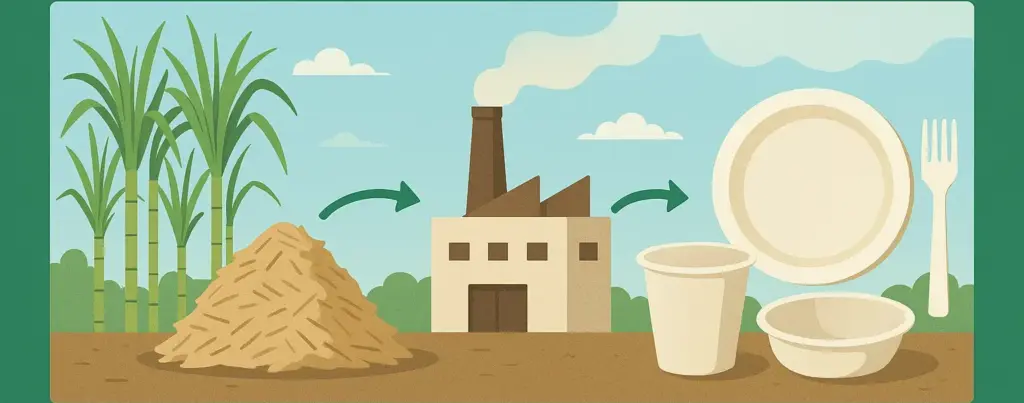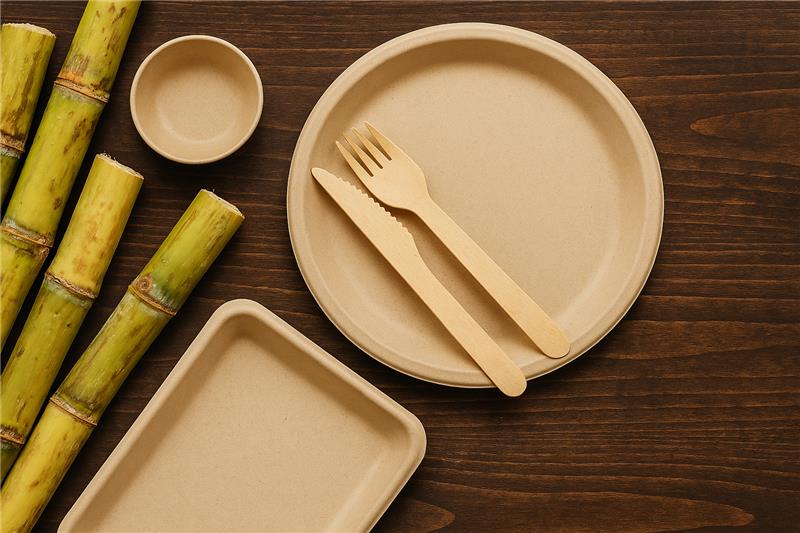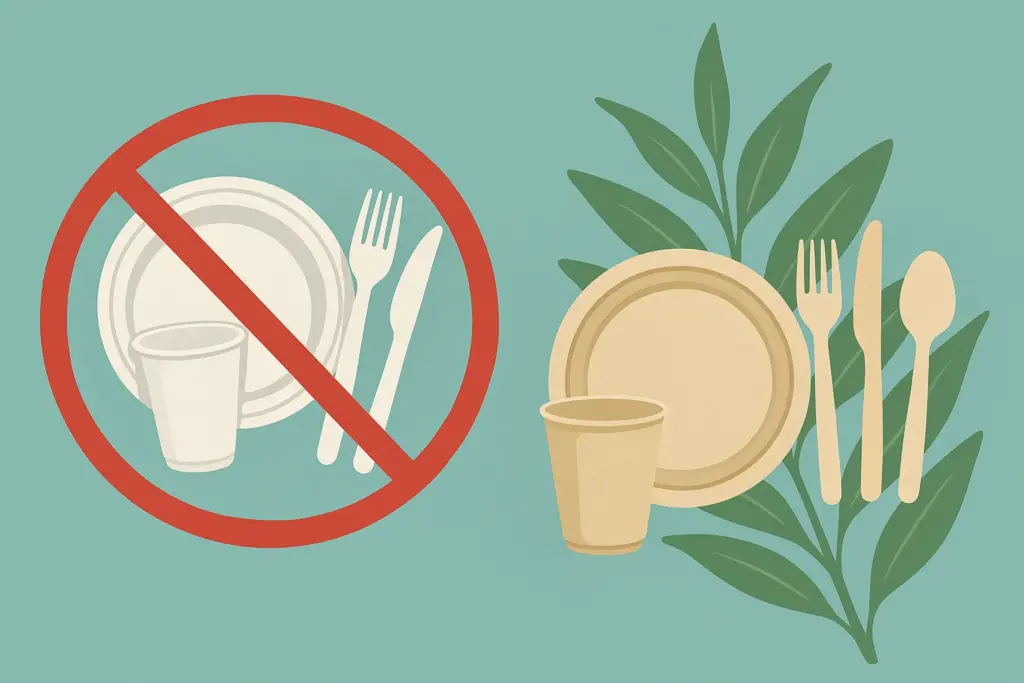Let’s be honest.
When businesses hear the word “sustainability,” the first question is usually: How much is this going to cost me?
And that’s a fair question.
In a world where margins are tight and competition is fierce, every penny matters. So if you’re a restaurant owner, caterer, hotelier, or food packaging distributor, switching from plastic to eco-friendly options like bagasse tableware might feel like a noble—but expensive—move.
But is it?
Let’s break it down.
What Is Bagasse Tableware, Again?
Bagasse is the dry, fibrous residue left after extracting juice from sugarcane. This agri-waste, instead of being burned or discarded, is now used to produce biodegradable, compostable tableware like plates, bowls, trays, and clamshells.
These products decompose in just 60–90 days, unlike plastic which lingers for 400+ years. But beyond the environmental advantages, let’s talk money.
The Cost Factor: Bagasse vs Plastic
Yes, bagasse is more expensive up front— typically 20% to 50% higher than plastic alternatives.
But that’s only half the story.
Hidden Costs of Plastic Most Businesses Ignore
- EPR & Plastic Waste Fines: With Extended Producer Responsibility (EPR) laws tightening, businesses are penalized for using non-recyclable plastics. In India, plastic waste rules introduced in 2022 levy heavy compliance costs.
- Brand Image Loss: Consumers are demanding sustainability. 73% of Gen Z consumers say they’re willing to pay more for eco-friendly packaging (First Insight Report, 2022).
- Limited Export Opportunities: Many countries in the EU and North America now ban plastic packaging imports, especially for food-grade goods.
So while plastic looks cheaper, it’s a liability in disguise.
Bagasse Tableware as a Long-Term Investment
Let’s flip the perspective.
If you serve 1,000 meals per day, and switch from plastic to bagasse plates (paying ₹0.70 more per unit), you’ll spend ₹700 extra per day.
That’s about ₹21,000 a month. But if that:
- Improves your brand image
- Attracts new eco-conscious customers
- Helps avoid fines
- Opens up export-friendly certifications
…it pays for itself.
In fact, restaurants that adopted sustainable packaging saw an average 12–18% increase in customer loyalty and repeat business within 6 months (McKinsey & NielsenIQ joint study, 2023).
Government Subsidies & Support
In India, schemes like the Startup India Green Initiative and MUDRA loans support eco-friendly ventures with low-interest loans and subsidies. In some states, subsidies of up to 25% on eco-packaging manufacturing units are provided.
This means businesses switching to bagasse aren’t alone—they’re backed.
Operational Efficiency
Bagasse tableware is:
- Microwave-safe
- Grease- and water-resistant
- Stackable and light (lower transport costs)
Also, since they’re compostable, they reduce disposal costs in places with organic waste collection.
So, Is It Viable?
Yes—if you think long-term.
Bagasse might not win on upfront cost, but it wins on brand equity, regulatory compliance, customer retention, and long-term savings.
In an era where greenwashing is getting called out, and real sustainability is rewarded—bagasse is the future-proof choice.
Make the Switch Today
If you’re a food business, event planner, or packaging distributor, now is the time to explore Pulpcraft’s bagasse tableware range.
- 100% compostable
- Made from agricultural waste
- Available in wholesale pricing
Visit https://pulp-craft.com to explore our product line or request a free sample kit.
Because the true cost of plastic? Is far more than just the price tag.


